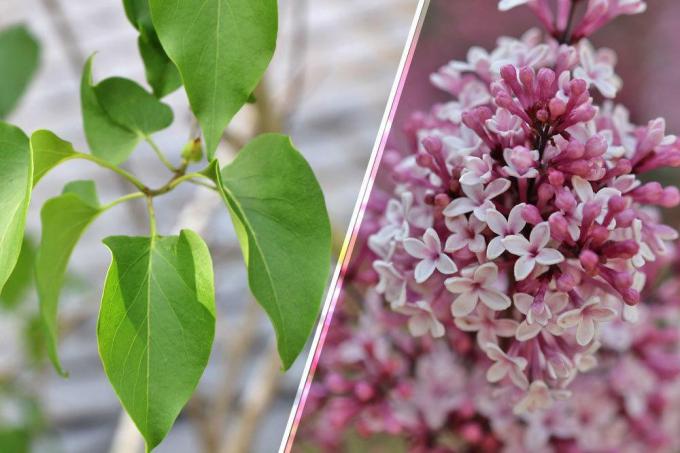
table of contents
- diagnosis
- causes
- measures
- 1. Supply nutrients
- 2. Loosen the soil
- 3. Location / cutting
- 4. Avoid water shortages
When the leaves of the lilac bush curl up, it is definitely a warning sign. Then something is wrong. With the most widespread one with us lilac Syringa vulgaris, diseases and pest infestation can largely be ruled out. It is much more likely that it is lacking in nutrients or that something is wrong with the soil. When it comes to first aid, there are a few basic measures that do not always have an immediate effect.
diagnosis
A lilac bush in your own garden is one of the most popular plants of all. No wonder: It looks great and its flowers exude an almost beguiling scent. However, if its foliage rolls up over a large area, the glory can quickly be over. A sheet that is rolled up has no meaning. However, if the number is significantly higher, the cause must be investigated. This includes first of all to realize what kind of lilac it actually is. Basically, three groups can be distinguished:
Syringa vulgaris or the common lilac
It is by far the most widespread lilac species in our gardens. It is so robust and resilient that diseases and pest infestation can practically be ruled out. If leaves roll here, it is very likely to have something to do with the nutrient supply or the soil conditions.
Syringa x, the noble lilac
The noble lilac is a special breed that is significantly more sensitive than its usual siblings. Diseases and pests do occur here. As a rule, they show up as discoloration of the foliage and branches, rather than curled leaves.
The non-blooming lilac bush
Essentially, what applies to the noble lilac is true for him.

tip: It is best to make a note of which lilac bush you have bought when you go shopping. This ensures clarity later and saves unnecessary measures.
causes
Leaves that roll or are rolled up, in the vast majority of cases have nothing to do with a disease of the plant or a pest infestation. Rather, the causes can be:
- too few nutrients
- too much compacted soil
- wrong location
- too much or too little water
By far the most common cause is a lack of nutrients. The plant is simply not getting enough nourishment to develop and thrive. Fortunately, this deficiency can be remedied relatively easily.
age
Now and then you can hear that the leaves of a lilac curled up have something to do with its age. However, this is nonsense. Syringa vulgaris is one of the olive trees that can live to be several hundred years old. Age only matters insofar as younger plants are more prone to leaf rolling. The root cause can definitely be found among those listed above. It can then be eliminated again with the measures described.
measures
The following tips are intended as immediate measures on the one hand, but are also intended as basic maintenance measures for the lilac bush on the other hand:
1. Supply nutrients
If the lilac has many rolled up leaves, it is first supplied with nutrients. The gift of Rose fertilizer. As an immediate measure, about 50 g should be administered regardless of the season. It is important that the fertilizer is poured very well immediately after the fertilizer has been applied. This makes it much easier for the plant to take up. So something like first aid is provided. The fertilization must then be repeated in the coming spring with twice the amount.
Note: The ideal is the use of liquid fertilizer, which is poured directly into the irrigation water. Basically, the manufacturer's dosing instructions must be observed.
2. Loosen the soil
If the soil in which the lilac was planted is too compact for whatever reason, this can mean that the roots cannot develop properly and wither. As an immediate measure, the soil in the root area should be carefully but thoroughly loosened with a rake.
3. Location / cutting
Locations can change. If more shrubs have been planted next to the lilac bush over time, this can lead to these nutrients being withdrawn from it or to the fact that it receives too little light. In this case, either one helps Change of location or the thinning or the Cut back of the neighboring plants. Incidentally, rhododendrons in particular are problematic in this context. They lead to the soil becoming more and more acidic, which the lilacs cannot tolerate.
4. Avoid water shortages
If the soil in the root area of the lilac is dust-dry, then an acute lack of water is likely to be the reason for the rolled up leaves. Of course, immediate watering helps here. The area around the trunk should always be moist. However, it must not get so wet there that waterlogging can occur. It is best to pour soft rainwater.




